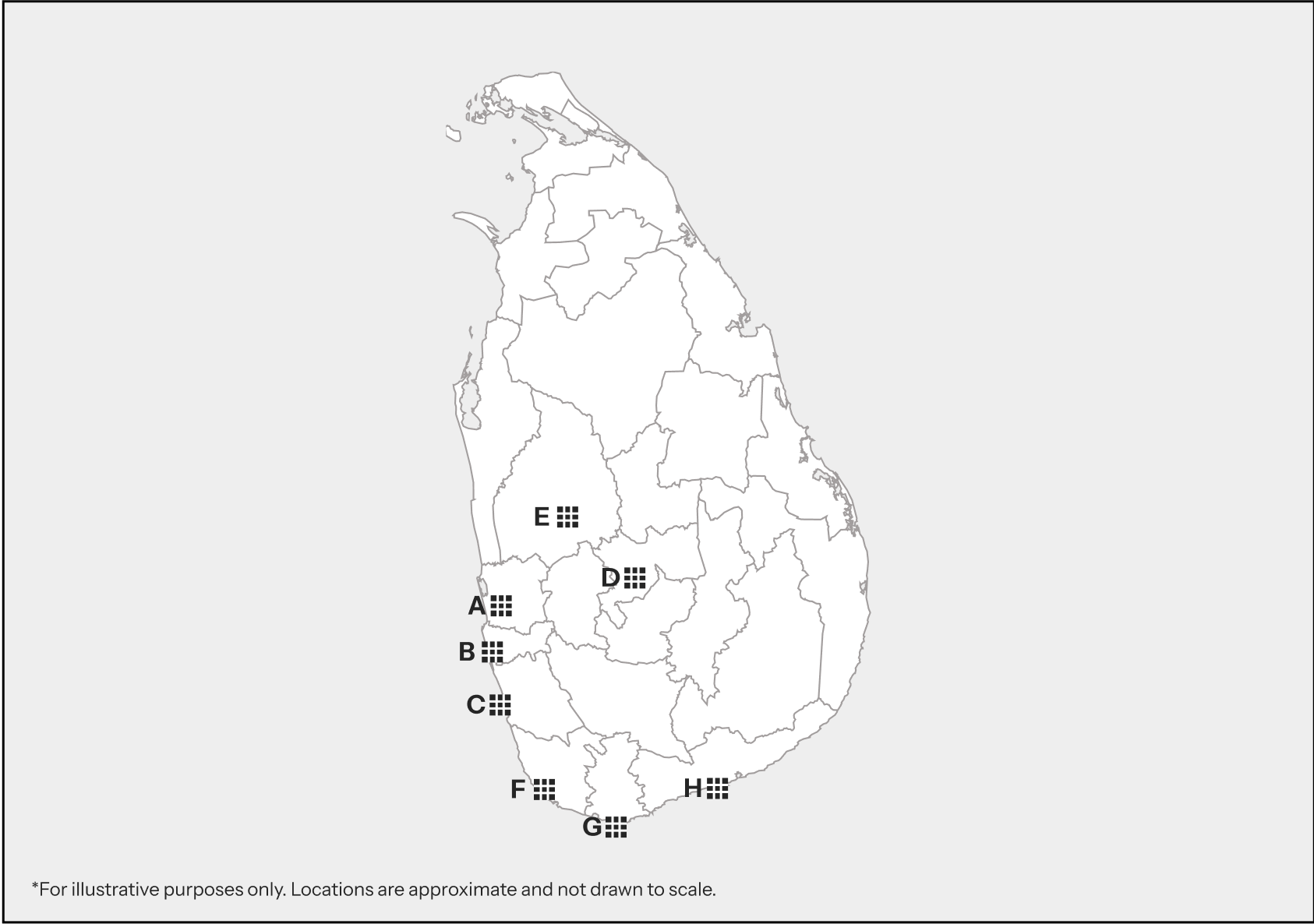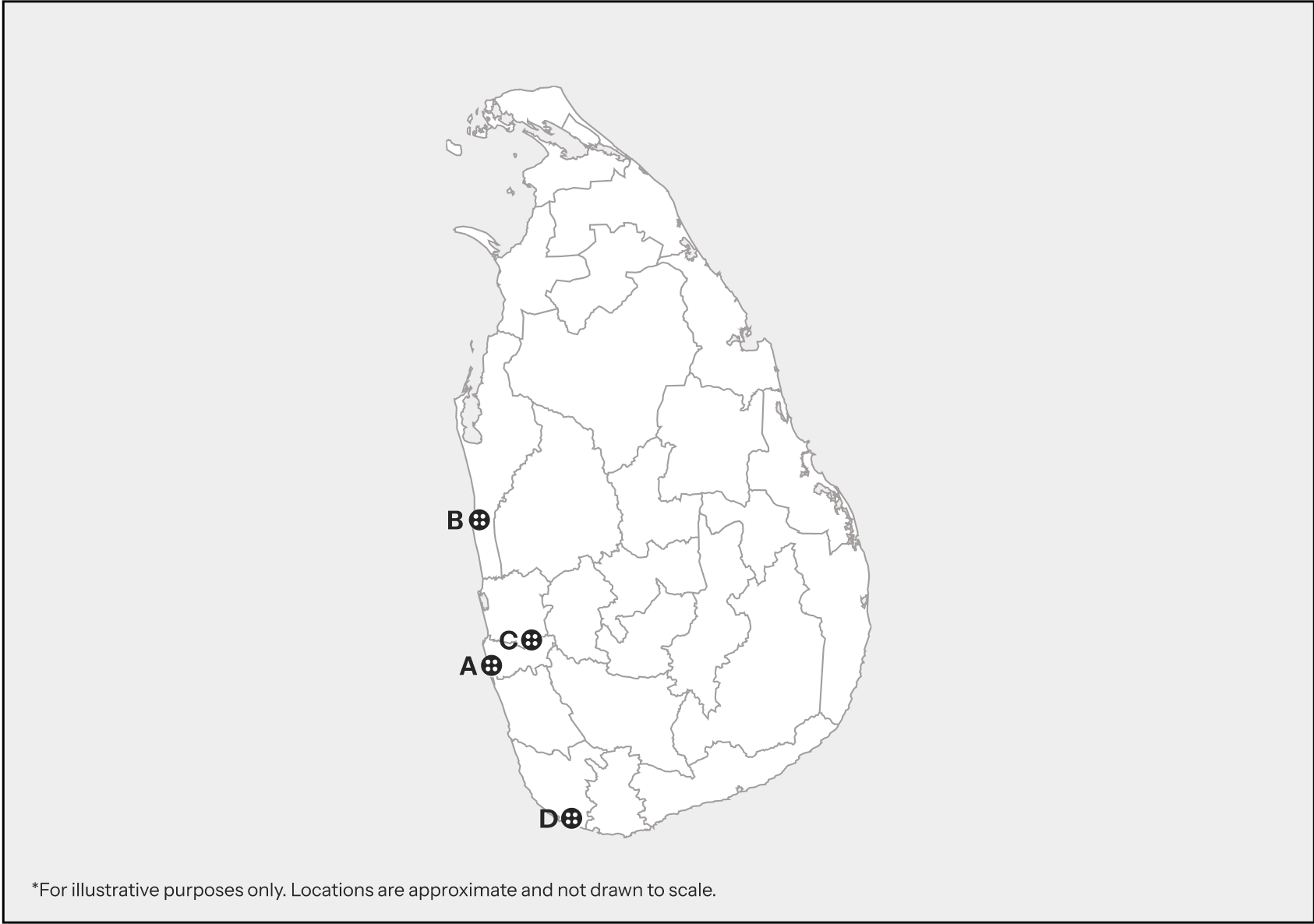Sri Lanka
download summary
Country Overview
No items found.
*All data is in tonnes per annum
TEXTILE WASTE*
Post consumer textile waste
No items found.
pre consumer textile waste
Post Industrial textile waste
No items found.
Imported textile waste
No items found.
*More information will be added at a later date. Sign up for updates
KEY POINTS ON Textiles & Apparels LANDSCAPE
$4.86M
Apparel Export (2023)
T&A contribute 44% of Sri Lanka’s exports, and is the second-largest global exporter of innerwear. During Jan–Apr 2021, textile and textile articles imports rose 22.1% to $938.6 Mn, while clothing and accessories imports fell 12.2% to $74.9 Mn. Key export destinations include the USA, UK, and Italy, with leading brands such as Gap, Liz Claiborne, Next, Jones New York, Nike, Tommy Hilfiger. sourcing from Sri Lanka.
$552M
Cotton Import
$74.1M
Cotton Export
Sri Lanka does not produce any raw materials, most of their yarn is imported. At the same time, the country also exports a notable share of both fabric and yarn along with supplying textiles for the domestic manufacture of export-oriented apparel.
350
Garment Factories
16
Textile Units
Sri Lanka’s apparel sector is led by Cut-Make-Trim (CMT) production, with most export factories being SMEs spread nationwide. Despite higher labour costs, the country is recognized for reliability and product quality, enhancing its global reputation. The industry upholds the “Garments without Guilt” ethos, ensuring ethical practices and community upliftment. Sri Lanka also set a global benchmark in sustainability, hosting the world’s first LEED Platinum-rated apparel factories.
10–20 tonnes/month
Textile Waste Generation by a Firm.
Sri Lanka's post-industrial textile waste is generated in large quantities and overwhelmingly managed through incineration or landfilling. Recycling infrastructures and managerial initiatives remain largely absent.
production clusters
Key regions with fibre production
Textile Clusters- Gampaha(A), Colombo(B), Kalutara(C), Kandy(D), Kurunegala(E), Galle(F), Matara(G), Hambantota(H)

Key regions with apparel production
Colombo(A), Katunayake(B), Biyagama(C), and Koggala(D)

- Major apparel manufacturers - MAS Intimates Pvt Ltd, MAS Active Trading Pvt Ltd, Brandix Apparel Ltd, Hirdaramani International Exports Pvt Ltd
Waste regulation
It envisions sustainable waste management for healthier lives and a cleaner environment, with goals extending to 2030. It provides comprehensive directions for managing all waste streams—solid, liquid, and gaseous—while addressing short-term challenges and long-term sustainability. The policy also sets out measures on education, research, institutional coordination, legal and financial mechanisms, and international compliance to ensure effective implementation
Guided by the principle of minimizing natural resource use, toxic materials, and waste across all economic sectors, Sri Lanka’s SCP policy emphasizes resource and energy efficiency, life-cycle thinking, and avoiding rebound effects. It aims to decouple economic growth from environmental degradation by lowering material and energy intensity, preventing waste and emissions, and fostering sustainable consumption patterns. With targets through 2030—including reduced waste generation and halved per-capita food waste—the policy promotes pollution prevention, green job creation, and structural incentives for sustainable practices across production and consumption
Waste trade
0.51 kT
Import quantities (HS 6309, 631010)
17.36 kT
Export quantities (HS 6309, 631010)
green energy
29.3%
Share of modern renewables in final energy consumption
- Renewable Electricity Generation by source: Hydro (82%), Wind (9%), Solar PV (8.8%)
- Soorya Bala Sangramaya: It encourages the installation of small solar systems by offering three key incentive schemes: net-metering, where surplus power is exported and credited for future use; net-accounting, which pays LKR 22/kWh for excess electricity during the first seven years and LKR 15.50/kWh thereafter; and net-plus, a gross-metering model where all exported solar power is compensated in cash.
- Secure, Affordable, and Sustainable Energy for Sri Lanka: A $150 million program to help reduce fossil fuel reliance and accelerate solar and wind energy projects. It supports clean electricity access for families and businesses, grid modernization, and mobilizing private investments with risk guarantees to encourage green energy deployment.

